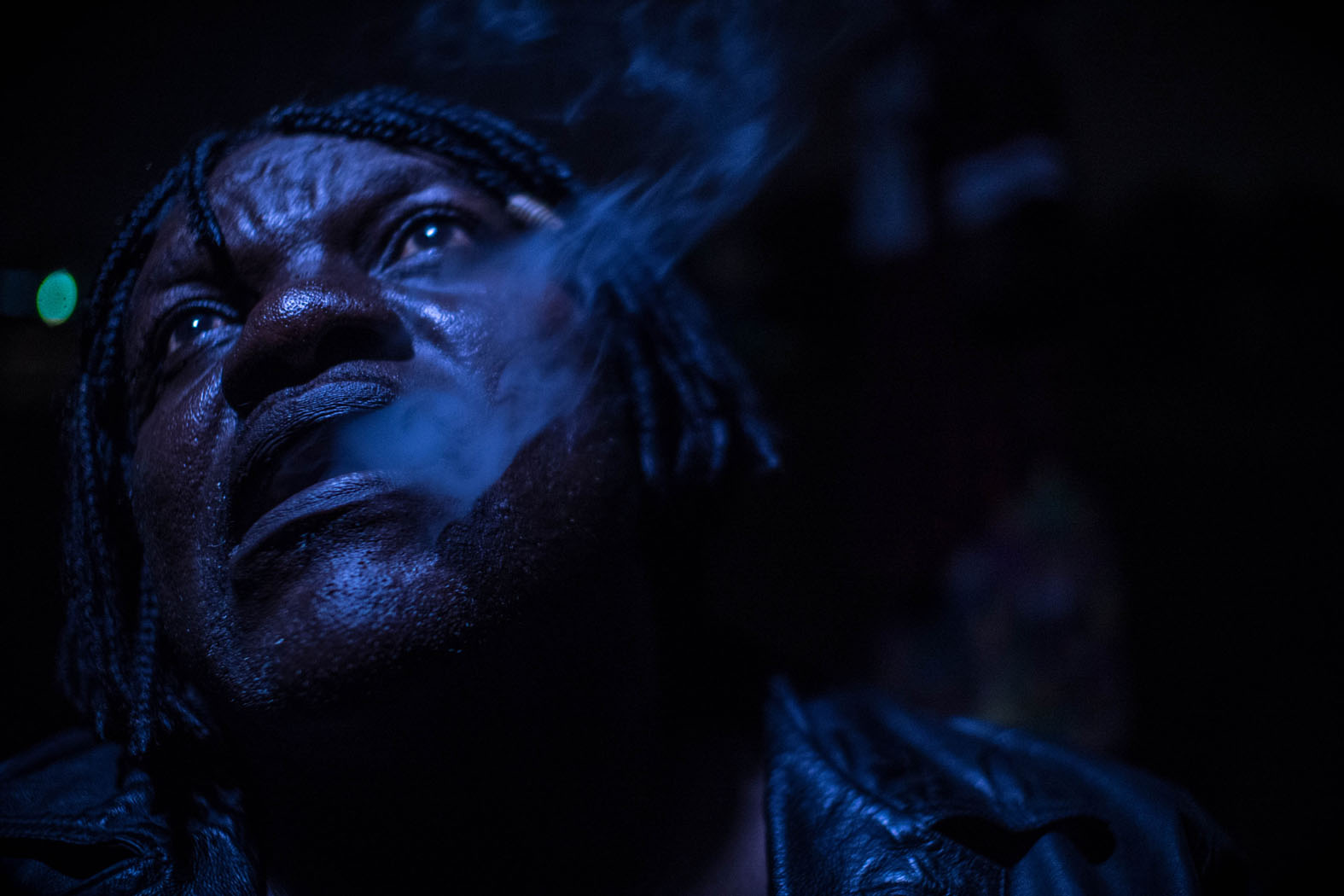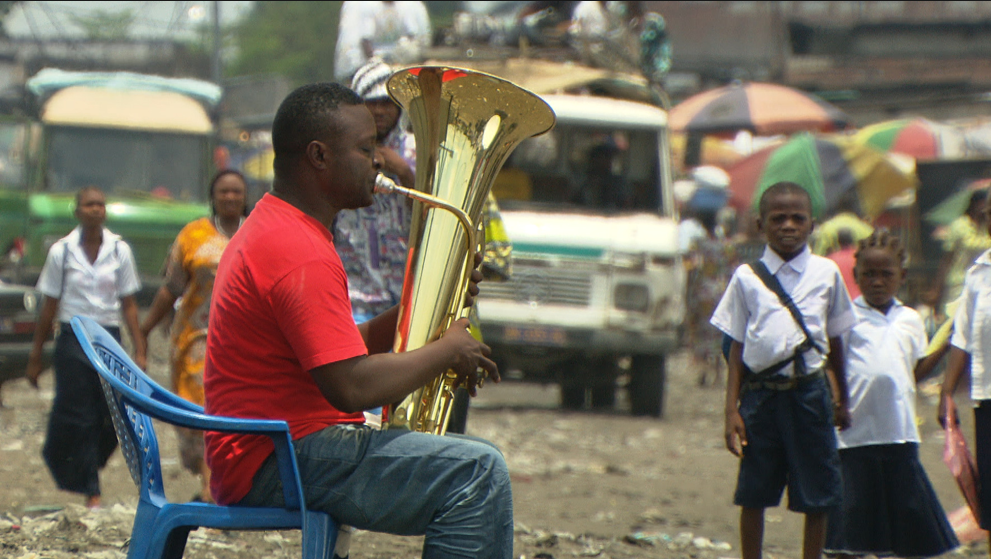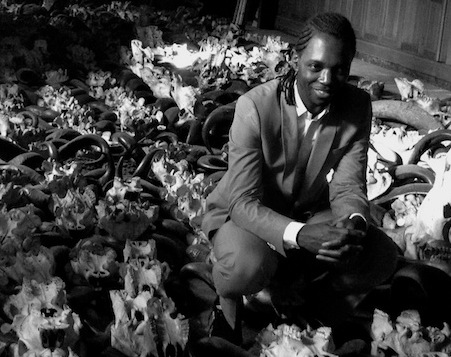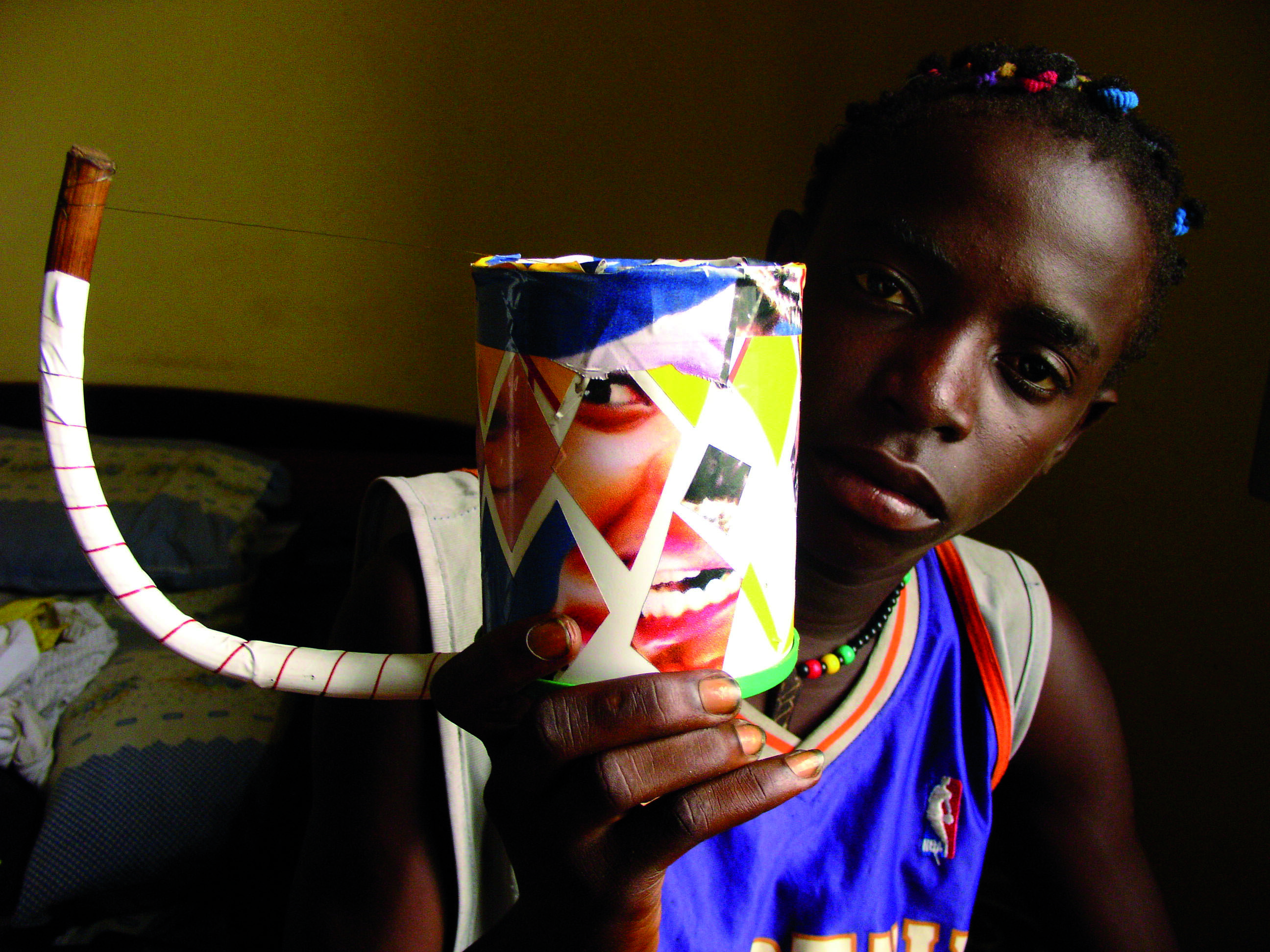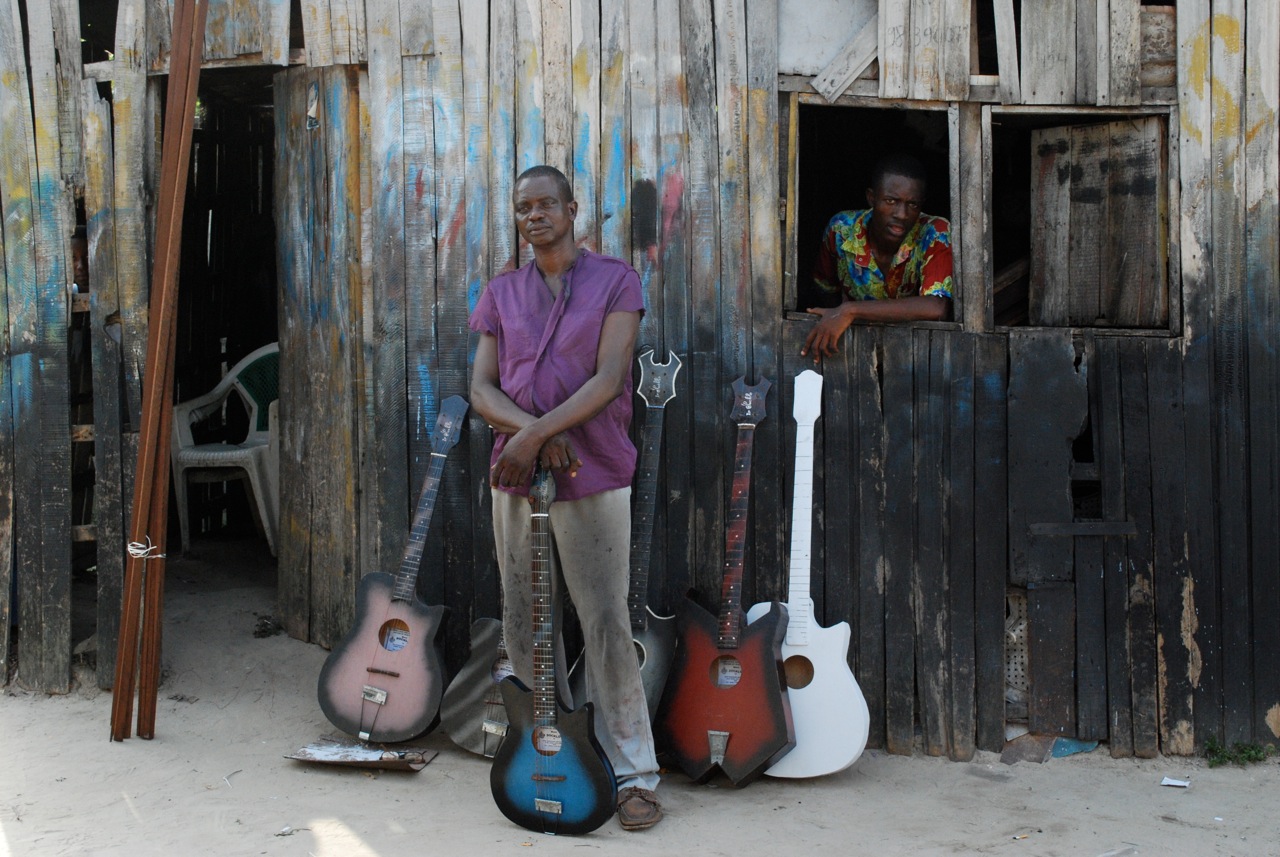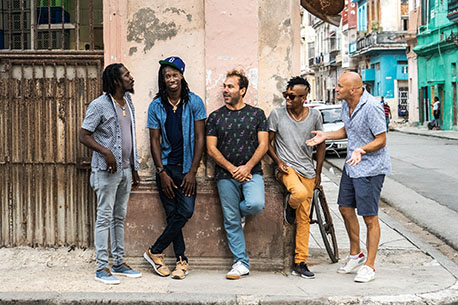
If there’s a joy in translating artist biographies, which despite their mundane commercial purpose are often well considered and well written, it’s discovering something new and enticing. The No Format! label is a dependable source for such discoveries. I’m not a big connoisseur of Cuban music, but it’s always a boon to hear something young and daring from that most musical of musical islands. Que Vola? fit the bill. They build a sophisticated landscape of big band jazz, courtesy of some of France’s hippest young jazzers, and then lob a flaming torch of raw Afro-Cuban rhythms, ritual, belief into the heart of all that virtuosity. It’s an envigorating confrontation of mind vs body, conservatory vs street, intricacy vs the complex simplicity of trance.
¿ Que Vola ?
¿Que vola ? « quoi de neuf ? » aiment se dire les Cubains pour entamer leurs salutations, si bien que l’expression est devenue un gimmick dans l’espagnol fort musical qu’on parle sur l’île. Que Vola ? c’est aussi le nom donné à un projet musical inédit, qui rassemble un septet français de jazz, réuni par Fidel Fourneyron, et trois jeunes et déjà émérites percussionnistes cubains, aussi brillants dans l’art d’appeler les divinités afro-cubaines, que dans les clubs de La Havane où leur rumba est entrée avec fracas.
Ce genre de rencontre musicale ne se bâtit pas en un jour. Il commence par un voyage, celui de Fidel Fourneyron, parti en 2012 à Cuba pour voir à quoi ressemble le pays qui a inspiré son prénom. Avec lui, son trombone et une adresse : Calle Luz, rue de la lumière. C’est le point de chute que lui a indiqué Thibaud Soulas, l’ami contrebassiste qui a vécu là-bas, s’est plongé dans la musique, baigné dans la vie, et en est revenu avec des amis. Parmi eux, trois percussionnistes afro-cubains. Fidel, seul, met ses pas dans les siens. Et y revient, s’initiant aux rythmes de la rumba avec Barbaro Crespo Richard, alias « Barbarito », le plus jeune d’un dangereux trio de frappeurs officiant dans le célèbre orchestre Osain del Monte. A sa tête, Adonis Panter Calderon, que toute la Havane reconnaît comme le plus doué de sa génération. Le troisième larron, Ramon Tamayo Martinez, est comme ses amis pétri de rythmes sacrés, ceux des cultes afro-cubains qui invitent les dieux de l’Afrique à danser chez nous les humains. Et les tambours et les chants sont là pour ça : saturer l’air de sacré pour libérer l’énergie des vivants, qui n’écoutent pas seulement, mais vivent la musique en y participant. Fidel, sociétaire de l’Orchestre National de Jazz, entrait dans un monde où la musique, le corps et l’esprit ne font qu’un. De quoi déclencher de nouveaux rêves, ouvrir de nouvelles perspectives.
Et si les cuivres remplaçaient les chants des musiques sacrées, et dialoguaient à leur place avec les tambours batà ? Il ne manque alors plus qu’une étincelle pour que germe Que Vola. Xavier Lemettre, qui dirige le Festival Banlieues Bleues, la fournit. Il propose à Fidel Fourneyron de faire de cette idée, sur scène, une réalité.
Le tromboniste se replonge avec Thibaud Soulas dans le labyrinthe des rythmes qui accompagnent les cultes : ceux de la Regla de Ocha, du Palo ou de la mystérieuse confrérie Abakua. La rumba aussi, profane et populaire, qu’Adonis et ses amis jouent avec maestria. Ils définissent un répertoire, reflet de l’immense variété des rythmes et des chants sacrés. Fin 2017, ils repartent ensemble à la Havane retrouver leurs amis Cubains. Fidel enregistre, et se met à composer, superposant mélodies et arrangements aux rythmes consacrés. Avec Thibaud Soulas, ils s’entourent de talentueux jeunes jazzmen français, pour beaucoup venus du groupe Radiation 10. Les Cubains les rejoignent à Paris. Le dialogue se noue, flotte la magie.
Magie. Le mot n’est pas galvaudé, tant les percussions irradient de leur magnétisme l’ensemble des sept morceaux qui constituent le disque. Les cuivres et les Vents (Fidel Fourneyron, Aymeric Avice, Benjamin Dousteyssier & Hugues Mayot), aériens, survolent avec autant de classe que de poésie les pulsations terriennes des tambours, que la batterie (Elie Duris) déborde en ouvrant d’autres possibles. Le Fender Rhodes (Bruno Ruder) laisse planer sur les morceaux ses mystérieuses ambiguités, aussi énigmatique que le sourire d’Eleggua, la divinité qui ouvre les chemins. Quant à la contrebasse (Thibaud Soulas), elle entretient une discussion aussi haletante que fusionnelle avec les percussions.
Car l’ensemble de ce voyage pourrait bien s’écouter comme une cérémonie, dont la trajectoire progresse vers le coeur palpitant de cette rencontre musicale. Elle s’ouvre sur un prologue (Kabiosile- saludo a Changó) où cuivres et vents « chantent » un salut à Changó, divinité de la foudre. Et se termine sur Resistir, un morceau épique qui semble revisiter la longue histoire des Afro-Cubains, semée d’ombres et de lumières, de chaînes et de larmes brisées par la résilience d’un peuple qui ouvre en musique les chemins de sa liberté. Entre les deux, le voyage ¿Que vola ?prend régulièrement les couleurs lancinantes de la transe, enveloppées d’une poésie cueillie sur les sentiers qu’aimait arpenter John Coltrane.
Ne vous étonnez donc pas si, à les écouter, à les voir sur scène, vous surprenez vos pieds en train de bouger. Ces musiciens dégagent une énergie telle qu’il est bien difficile d’y résister. C’est là toute la force de ce projet, et toute sa nouveauté.
En somme, la réponse à la question « quoi de neuf ? » ¿Que vola ?
¿ Que Vola?
¿Que Vola? “What’s up?” That’s how Cubans like to greet each other. They like it so much that the phrase has become common currency in the heavily-accented street slang that’s spoken on the island. Que Vola? is also the name of a unique project that brings together a French jazz septet and three young and highly-skilled Cuban percussionists, marrying some of the most dazzling and youthful virtuosity that France and Cuba have to offer with the Afro-Cuban divinities that underpin the soul of Cuban music.
It all started with a journey. In 2012, French trombonist Fidel Fourneyron decided to go to Cuba to find out more about the country that had inspired his name. Apart from a few essentials for the trip, he packed his trombone and one address: Calle Luz– ‘the street of light’. The place was recommended by his friend, the double-bassist Thibaud Solas, who had lived there for a while and immersed himself in the life and music that sizzled all around him. Solas came back to France with an address book bulging with new names and numbers, including those of three remarkable local percussionists – Barbaro Crespo Richard aka ‘Barbarito’, Ramon Tamayo Martinez and Adonis Panter Calderon – all members of the celebrated Osain del Monte Orchestra.
In the Calle Luz, Fidel, a lynchpin of France’s national Jazz Orchestra, found himself delving deeper and deeper into the world of the Africa-Cuban cults that summon the gods of Africa to purge the spirits of the living. Their drums, voices and dances all serve this higher purpose, saturating the air with their sacred power and liberating the soul. It’s a world in which participants don’t just listen, they ‘live’ the music. As Fidel jammed, danced and drank it all in, new ideas and dreams began to take hold. What if the voices of that sacred music were to be replaced by brass? What if the power of ancient ritual were to be wrapped in the poetry of John Coltrane? What would happen then?
Back in France, the answer began to emerge, slowly and tentatively. With his friend Thibaud at his side, Fidel journeyed ever deeper into the labyrinths of rhythm that power the Afro-Cuban cults, otherwise known as Santeríaor Regla de Ochain Cuba. The rhythms of the Palo cult for example, with its roots deep in the Congo region of central Africa; or those of the secretive Abakua brotherhood, with their masked dances, and legendary ability to turn men into leopards. Or the more profane rumba that Adonis and Osain del Monte serve up with total mastery, night after night, to the dancing denizens of downtown La Havana.
All that was needed now was a spark, an opportunity, a deadline. It came in the shape of Xavier Lemettre, director of the Banlieue Blues Festival in Paris, who proposed turning Fidel and Thibaud’s ferment of ideas into a reality, live on stage.
Fidel and Thibaud assembled a repertoire that reflected the immense variety of all those rhythms and chants. They returned to Cuba at the end of 2017 to link up with their friends and plug back into the Afro-Cuban ‘mains’. Fidel started to compose and record, superimposing new melodies and arrangements over a sacred Afro-Cuban core. They surrounded themselves with talented French jazzmen, many of whom belonged to the band Radiation 10. The Cubans joined them in Paris; a deeper dialogue was woven; the magic began to glide.
The word ‘magic’ won’t seem too far-fetched when you hear how all the music on this debut album has been irradiated by the age-old power of that percussion. The brass and wind of Fidel Fourneyron, Aymeric Avice, Benjamin Dousteyssier and Hugh Mayot soar high above the throb of the sacred drums that spars with the kit drums of Elie Duris, each goading the other higher, deeper. The Fender Rhodes of Bruno Ruder glides over the songs, fleeting, enigmatic, like the smile of Elegua, the god of pathways and possibilities. The double bass of Thibaud Solas keeps this absorbing conversation alive and energised.
The seven pieces are arranged like the stages of a ceremonial journey, with every stage bringing the listener closer to the beating heart of this musical encounter. It starts with ‘Kabiosile – saludo à Changó’, a ‘prologue’ in which the brass and wind instruments ‘sing’ a salutation to Changó, god of lightning and thunder. And it finishes with ‘Resistir’, an epic finale that takes the listener back through Afro-Cuban history, with its light and shadow, its joy and darkness, its chains and tears overcome by the resilience of an entire people, its hard-earned liberty won with music. In between lies a trance-like journey, a virtuoso ride with mind, heart and limbs fully engaged. These musicians give off an energy that’s makes it hard not to dance. That’s the strength of this project, and its novelty too.
So the right answer to that question “what’s up?”, is another question:
Que Vola?
© No Format! All Rights Reserved. Written by Vladimir Cagnolari. Translated by Andy Morgan.
SIGN UP! If you’ve enjoyed reading or looking at my work, please sign up to my newsletter. You’ll get updates every month or so with new articles, photo essays and other content relating to global music, Africa, the Sahara and more….
DONATE! If you’ve enjoyed what you’ve read, or have learned something that might be useful for your own work, please consider making a small donation. Any amount – £1, £2, £5, £1000! – will help to keep the words flowing and the stories coming. Thank you so much!


